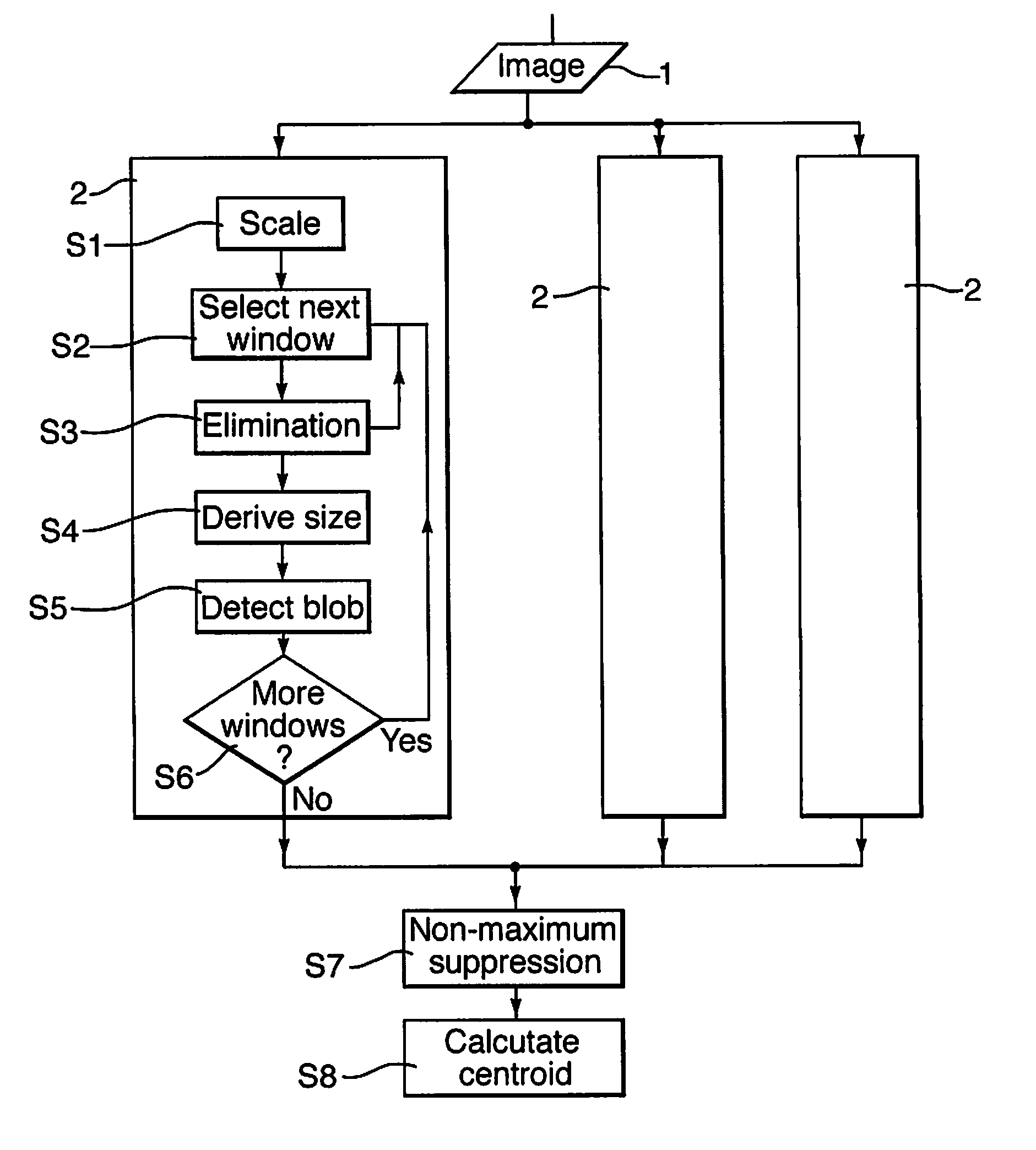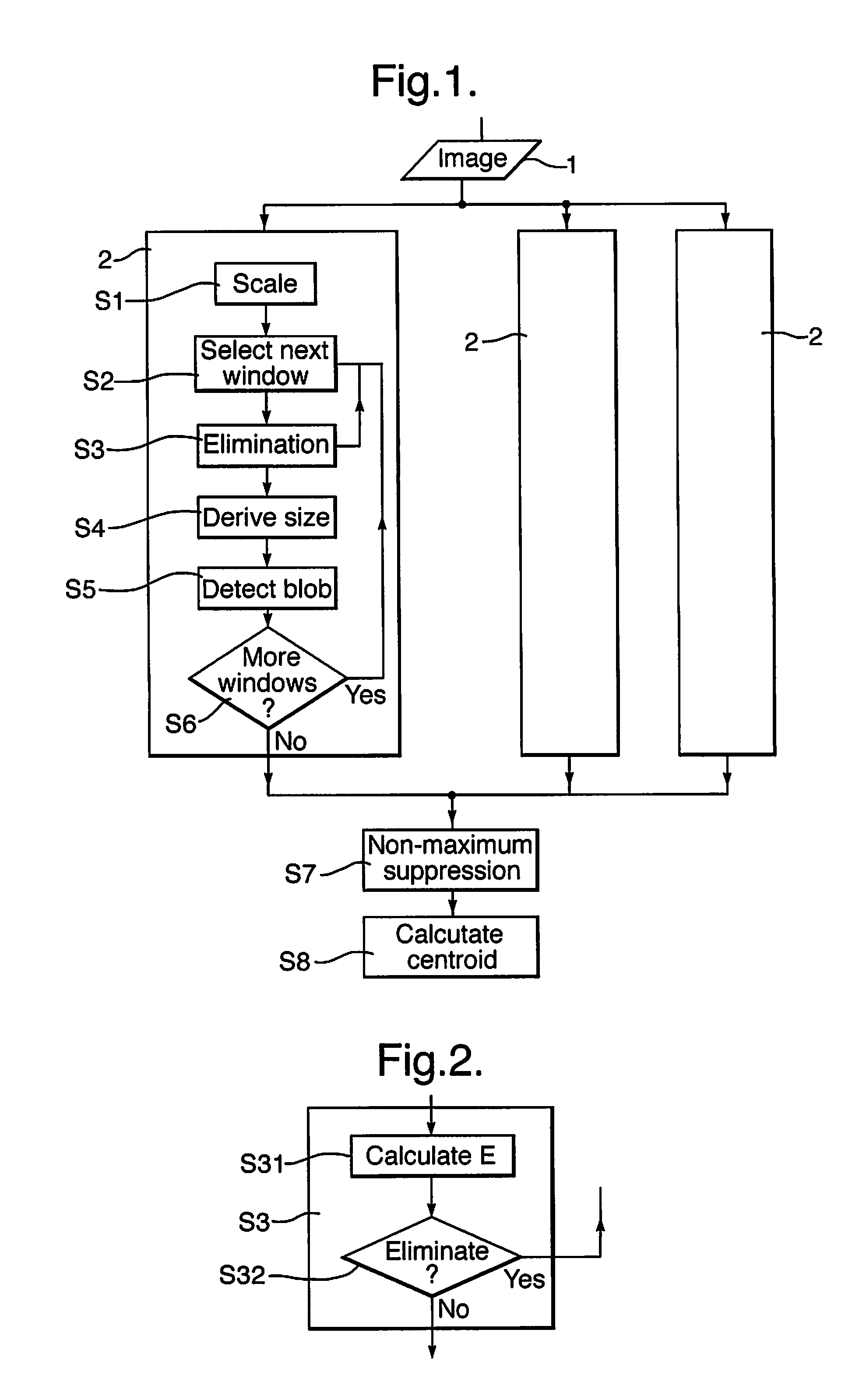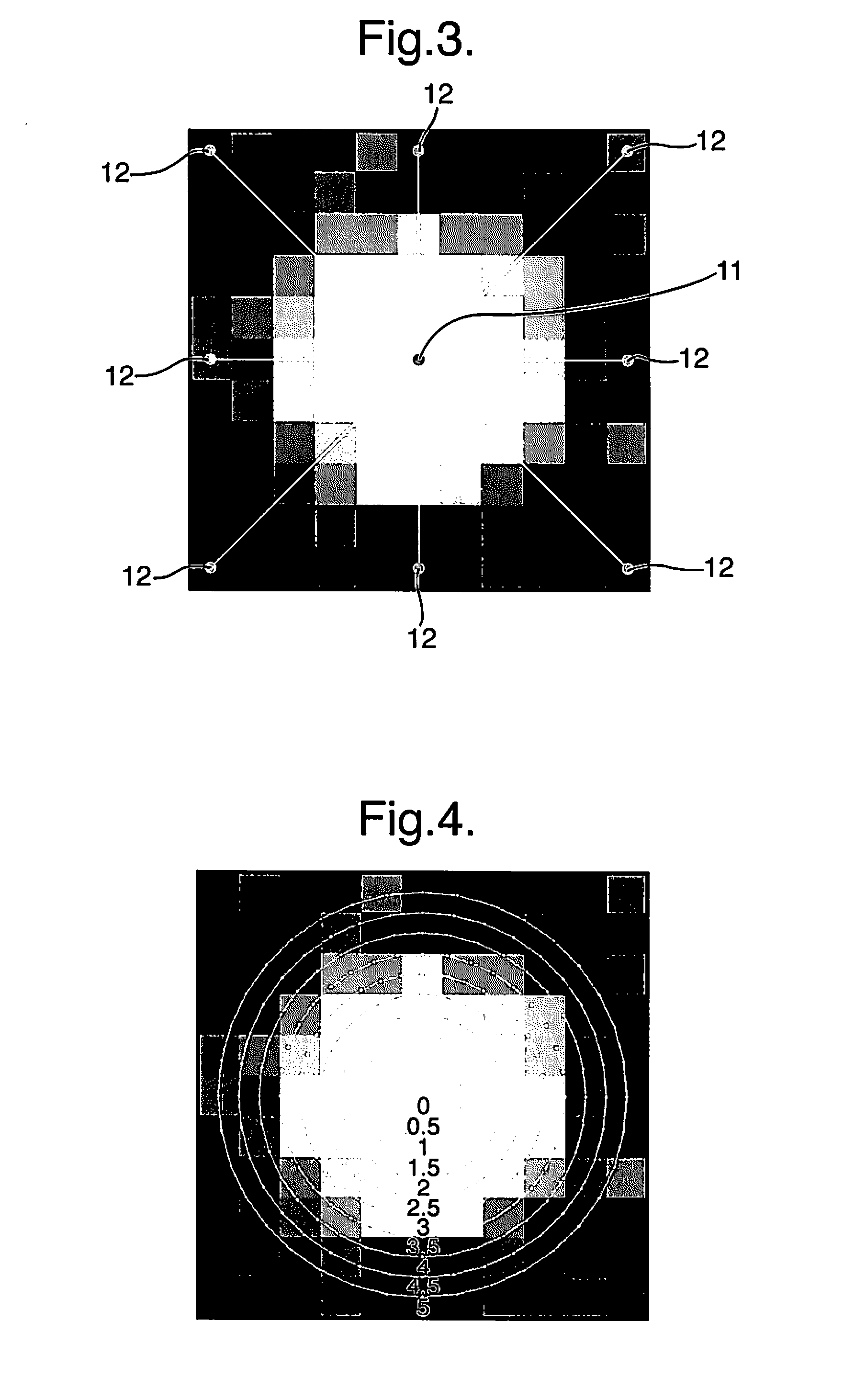Detection of blobs in images
a technology of image and blob, which is applied in the field of image detection, can solve the problems of not being highly suitable for outdoor use, optical motion capture systems, and typically very fast systems, and achieve the effects of weak detection, easy calculation, and speed up analysis
- Summary
- Abstract
- Description
- Claims
- Application Information
AI Technical Summary
Benefits of technology
Problems solved by technology
Method used
Image
Examples
Embodiment Construction
[0069]A blob detection method is shown in the flow chart of FIG. 1.
[0070]The method operates on an image 1. The image 1 is two dimensional and consists of an array of values in respect of individual pixels of the image 1. In practical embodiments, the method may be performed repeatedly on a sequence of images 1 provided at a video frame rate, typically successive frames of a video image. In the following, it is assumed that the values of the image 1 have an 8 bit gray-scale representation, although the method is readily extendible to arbitrary precision formats. The values represent intensity and may be derived from a colour representation using conventional processing.
[0071]The image 1 is supplied to a plurality of analysis stages 2 which perform the same analysis of the image 1 but at a different scale. Each analysis stage 2 is therefore identical and consists of the same steps, although for clarity the steps of only one analysis stage are set out in FIG. 1. As an alternative to i...
PUM
 Login to View More
Login to View More Abstract
Description
Claims
Application Information
 Login to View More
Login to View More - R&D Engineer
- R&D Manager
- IP Professional
- Industry Leading Data Capabilities
- Powerful AI technology
- Patent DNA Extraction
Browse by: Latest US Patents, China's latest patents, Technical Efficacy Thesaurus, Application Domain, Technology Topic, Popular Technical Reports.
© 2024 PatSnap. All rights reserved.Legal|Privacy policy|Modern Slavery Act Transparency Statement|Sitemap|About US| Contact US: help@patsnap.com










